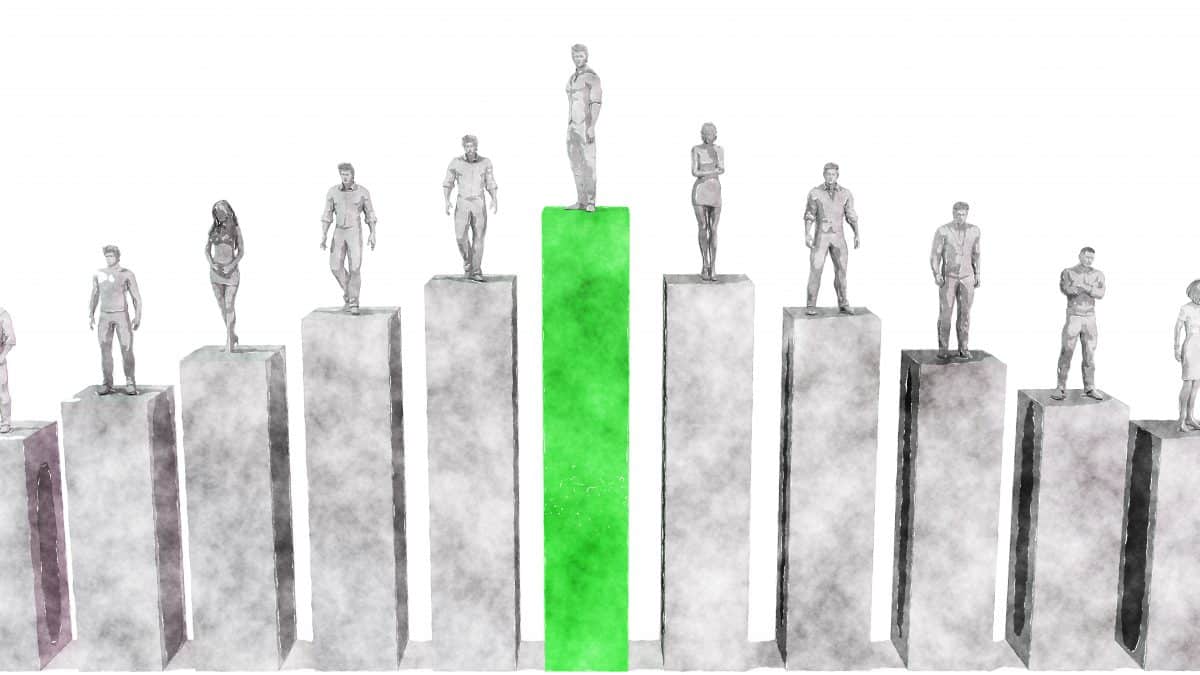
Barometric Price Leadership: What Really Makes a Business a Price Leader? 📊
Can Barometric Price Leadership really help your business become a Price Leader? How do you make your business one of the strongest competitors in your market when the competition is fierce, and your industry is being disrupted? Do you maintain your lead market position by undermining the value of the market over which you are competing – like a traditional barometric pricing leadership? Or do you try to re-define your pricing leadership to grow the share of the pie for everyone?
>Download Now: Free PDF How to Drive Pricing Strategy to Maximise EBIT Growth
Most executive management teams at this point will say the latter. But is this really the case?
What’s the real story behind pricing leadership in your industry?
I ask this because I’ve seen the data and the evidence overwhelmingly indicates that the competitive dynamics in your industry are de-valuing the total economic value of your market.
In reality, barometric price leadership is a concept that many of your biggest competitors and maybe your firm is struggling to get right.
A barometric pricing leadership is bogged down by:
- Excessive discounting
- Price slashing
- Price promotions
- Cost-plus pricing
- EDLP
- Cost down initiatives
- Price wars
So, in this article, I’m going to de-mystify the concept of barometric price leadership using real-world examples that we can all relate to – Australian supermarket price leadership. I will then go on to discuss different types of pricing leaderships in your market, and close with some tips on how to approach price leadership in 2021-2022.
I will argue that old-fashioned pricing leadership can commoditise markets and create unnecessary and aggressive price wars which in turn de-value your offer and isolate your business from your customers.

What is price leadership?
To understand how to improve your barometric price leadership model, here’s a short overview of some of the key points, assumptions, strengths and weaknesses.
Barometric price leadership
The central hypothesis of barometric price leadership is that competitors will always follow the price leader. The underlying assumption here is that the market will follow the most agile company in the market.
The principle tenets of barometric price leadership are:
- Most businesses cannot wait to discover the anticipated market changes on their own
- Only one firm can be a price leader – i.e., the business with the best pricing team, competitive intelligence and knowledge of the market.
A barometric price leadership model can be used by both large and small firms that want to position themselves as price leaders. More often than not, however, large firms employ full-time dedicated pricing resources to ensure they are a price leader. Smaller firms, however (or firms with limited price maturity),;do not – and often struggle with ad hoc pricing support from sales or finance.
Things to know about barometric price leadership before you begin…
If you or your firm are thinking of using a barometric price leadership model in your business because you want to win market share, then it’s important to know that it takes lots of pricing skill, capability and tools to identify market changes before your competitors.
Winning market share is not easy.
You need a dedicated pricing team to constantly monitor industry dynamics and adjust price strategy, execution and tactics as required.
A price leader using a barometric price leadership model will tend to have a full-time pricing manager resource or team to set up their pricing operational model and competitive intelligence system. Without a team or an effective operational pricing model, it’s impossible to identify and adapt to changing market conditions faster than your competitors. This means you want to be able to unlock hidden revenue and margin opportunities faster than your competitors.
A supermarket case example of barometric pricing leadership in action
For example, let’s just think about the Australian supermarket barometric pricing leadership for a moment. What do both Coles and Woolworths do to be price leaders in the supermarket industry?
Largely, it seems they use barometric pricing leadership to second guess what the other will do if one takes a price change in a particular category or product line (just think about Coles ‘Down, Down’ Campaign versus Woolworth ‘Price Trust’ campaign – a multi-billion dollar ongoing campaign to change consumers’ price perception).
But there’s price perception and then there are real commercial realities to deal with…
For example, after studying the prices of a common basket of goods over the past 4 years, it would appear that Australian supermarkets have been strategically leading prices upward over a range of categories. And products over this time to extend the profitability of each supermarket’s established categories and products.
But this is not all that’s been happening…
When you take a look at the price cycles in supermarket pricing, it seems that after a fairly significant price rise, there is a series of cascading tactical discounts and promotions to soften the blow of the previous price hike and re-claim market share losses.
Overall, the majority of pricing actions taken by supermarkets are actually price cuts rather than price increases. Even though the price rises are significant, the incremental tactical discounts (or strategic price decreases) increase the share of the pie for everyone (meaning Coles and Woolworth that is).
Price leadership strategies for supermarkets
It appears Australian supermarkets use ‘price trust’ campaigns driven by an EDLP promotional strategy and RRP price positioning exercises to optimise their revenues and push more volume. However, it’s debatable whether their tactical discounting really do recoup the margin they lose when their customers switch to the competitor or fresh food alternatives after a price rise.
In theory, calculating the number and size of optimal price increases required to produce larger monetary amounts than the reductions over time seems like a good roadmap to profitability for Australian supermarkets. However, in reality, with the rise of Aldi in the last 4 years – upping its game in food quality, series, range and store appearance – coupled with the trends for healthy eating– pulling the promotional lever to ensure price leadership is not enough to drive profitability anymore.
Customers want more from their supermarkets:
- Better range
- more choice
- a good layout
- fewer price tricks
- more price transparency
- good quality and healthy food options
To name but a few customer value drivers…
Supermarkets and any supplier to Coles and Woolies (either overplaying trade spend, ELDP and promotional leadership) really need to re-think their barometric pricing leadership model. Or else facing disappointing financial results year on year and a battering from consumers on social media.
Price Leadership Advantages and Disadvantages
If I was going to name any real advantages of barometric price leadership, it would be price benchmarking.
Having a price leader in a market gives other smaller firms a price benchmark to set and manage their prices. By this I mean, it gives unsophisticated pricing organisations. These are the firms who haven’t invested in their pricing capability – a sense of control. Saying this, this level of price benchmarking is still crude and unsophisticated.
Comparative price benchmarking should only be used if you have absolutely no other market intelligence to back up your pricing decisions.
For example, when you have a price leader in the market to follow, often it can feel like your pricing is somewhere in the ballpark – and you’re not going to lose volume or customers. Unfortunately, things often don’t turn out like this. A price leader’s business model and operations are different from yours.
Benchmarking your pricing off your perceived price leader doesn’t take into account key differences between you and them. You’ll inevitably find yourself losing money. You may even find yourself compromising on service or product quality to match their prices. This type of price leadership can often spiral into steady losses – losing customers and hard-earned volume.
Another problem with barometric price leadership is that it often leads to a negative-sum game where the winner wipes out the smaller, uninformed competition.
For example, when you compete on price with a firm with greater scale and operational efficiencies than you, it’s easier for them to set their prices lower than yours and for longer periods of time.
It’s just not a comfortable or viable financial situation for smaller firms to always follow the price leader.
Very often small firms cannot produce or deliver their produces as cheaply as price leaders. This means smaller firms will struggle to maintain a price skimming strategy long enough to win back their market share.
Companies well known for using a dominant form of barometric price leadership are Unilever, Kellogg’s, Coca-Cola, PepsiCo, Mars, and Amazon. However, even these industry giants are suffering right now using this type of traditional price leadership.
Finally, the final problem I want to cover off about barometric price leadership is the assumption that low price wins more customers. Or that customers only buy on price.
This is a fundamentally flawed position. Barometric price leadership is not enough to win more customers or compete in a changing market place.
For example, the processed foods category is deflating by 10-40% year on year. People just don’t want to pay a premium for cheap, fatty junk food anymore. Pricing issue or business model issue?
Barometric price leadership completely disregards the role of the customers in the price profit equation.
Customers do not just buy from companies (price leaders or otherwise) because of low prices. They buy because the firms offer them something they value. Don’t believe this? Well, if everyone bought on price, we’d all be flying Tiger Airlines. We’d also be dining out on McDonald’s every night.
3 things to consider when you develop your pricing leadership model
After learning the advantages and disadvantages of pricing leadership, let’s discuss the factors that you need to consider in developing your pricing leadership model. We have identified three of them.
- Sometimes you need to cede market share to competitors to grow the market for everyone.
- Real success and long-term growth in business is not a zero-sum game. You’ve got to think about growth strategies too.
- A robust pricing strategy actually extends the life span and profitability of established products for everyone. An ill-thought-through price strategy (or outdated strategy), conversely, can lead to uninformed price actions and price wars.
Implications
Only a business with the best pricing team, competitive intelligence and knowledge of the market can be a price leader.
It’s not easy to win market share. You should have a dedicated pricing team that regularly observes industry dynamics and adjust price strategy, execution and tactics necessarily.
Australian supermarkets using “price trust” campaigns need to re-think their barometric pricing leadership model. Otherwise, they will face disappointing financial results every year and criticisms from consumers on social media.
Customers do not just buy because of low prices. They buy because the business is offering them something that they value. It’s helpful to note that customers’ value-drivers are: better range, more choice, a good layout and fewer price tricks. Let’s also add, price transparency, good quality and healthy food options.
〉〉〉 Get Your FREE Pricing Audit 〉〉〉
Conclusion
It’s time re-build your price team to ensure you’re really a price leader in 2021-2022. CEOs can demand compliance but they can’t dictate commitment, trust, conviction, or creativity to make their vision of pricing work.
For a comprehensive view on maximising growth in your company,
Download a complimentary whitepaper on Improving Your Pricing Team’s Capability.
Are you a business in need of help to align your pricing strategy, people and operations to deliver an immediate impact on profit?
If so, please call (+61) 2 9000 1115.
You can also email us at team@taylorwells.com.au if you have any further questions.
Make your pricing world class!
Related Posts
Leave a Reply Cancel reply
Categories
- marketing strategy (26)
- Organisational Design (14)
- Podcast (114)
- Pricing Capability (87)
- Pricing Career Advice (10)
- Pricing Recruitment (19)
- Pricing Strategy (292)
- Pricing Team Skills (13)
- Pricing Teams & Culture (25)
- Pricing Transformation (48)
- Revenue Model (25)
- Sales Effectiveness (27)
- Talent Management (7)
- Technical Pricing Skills (35)






